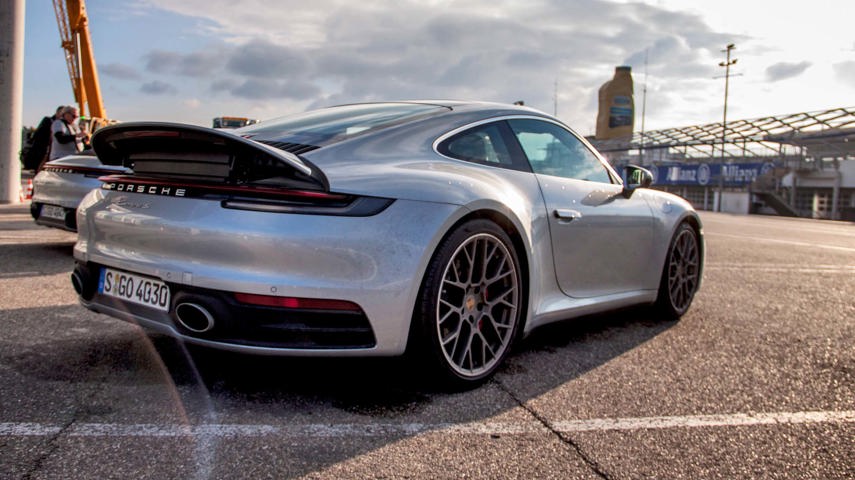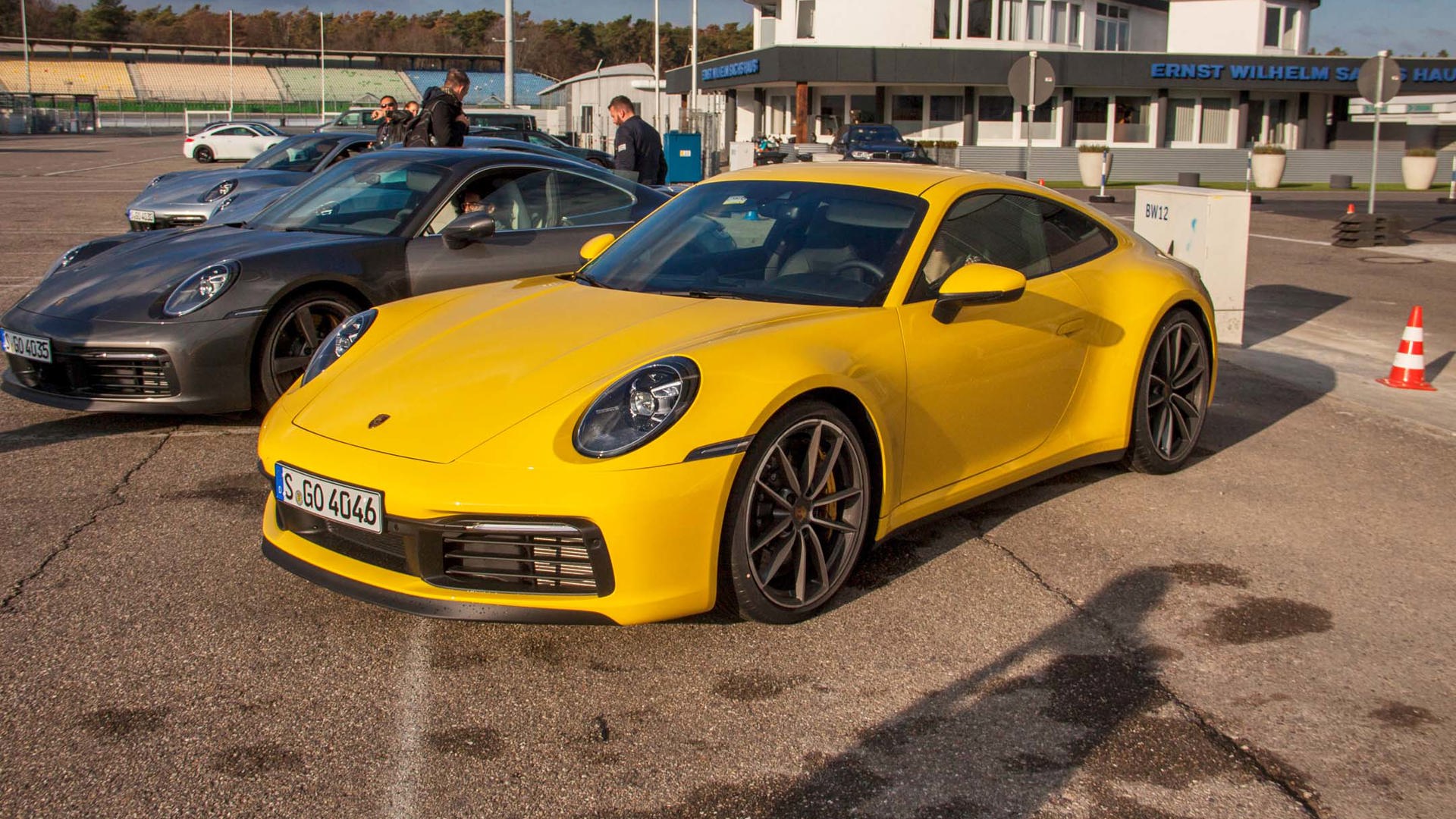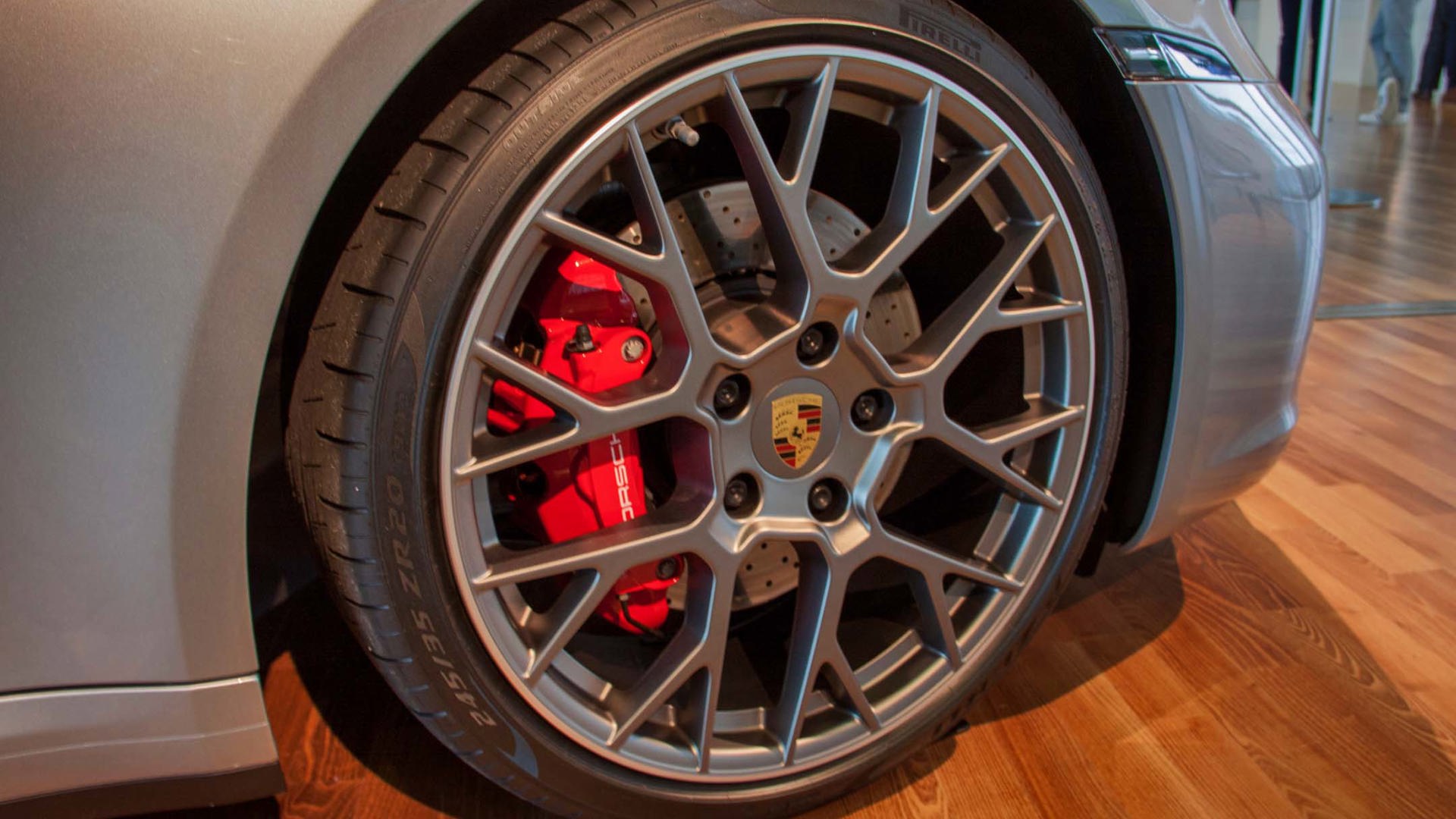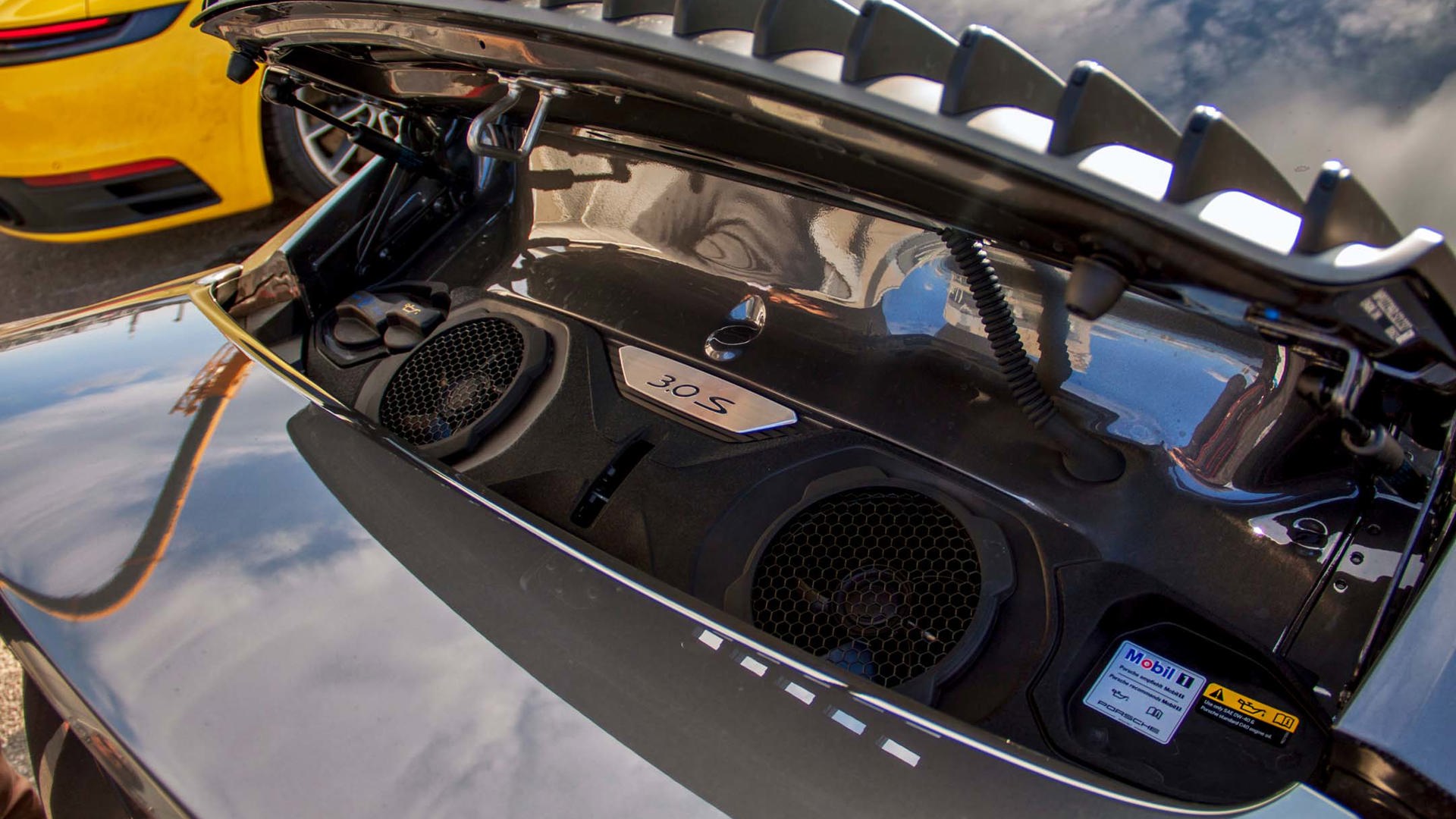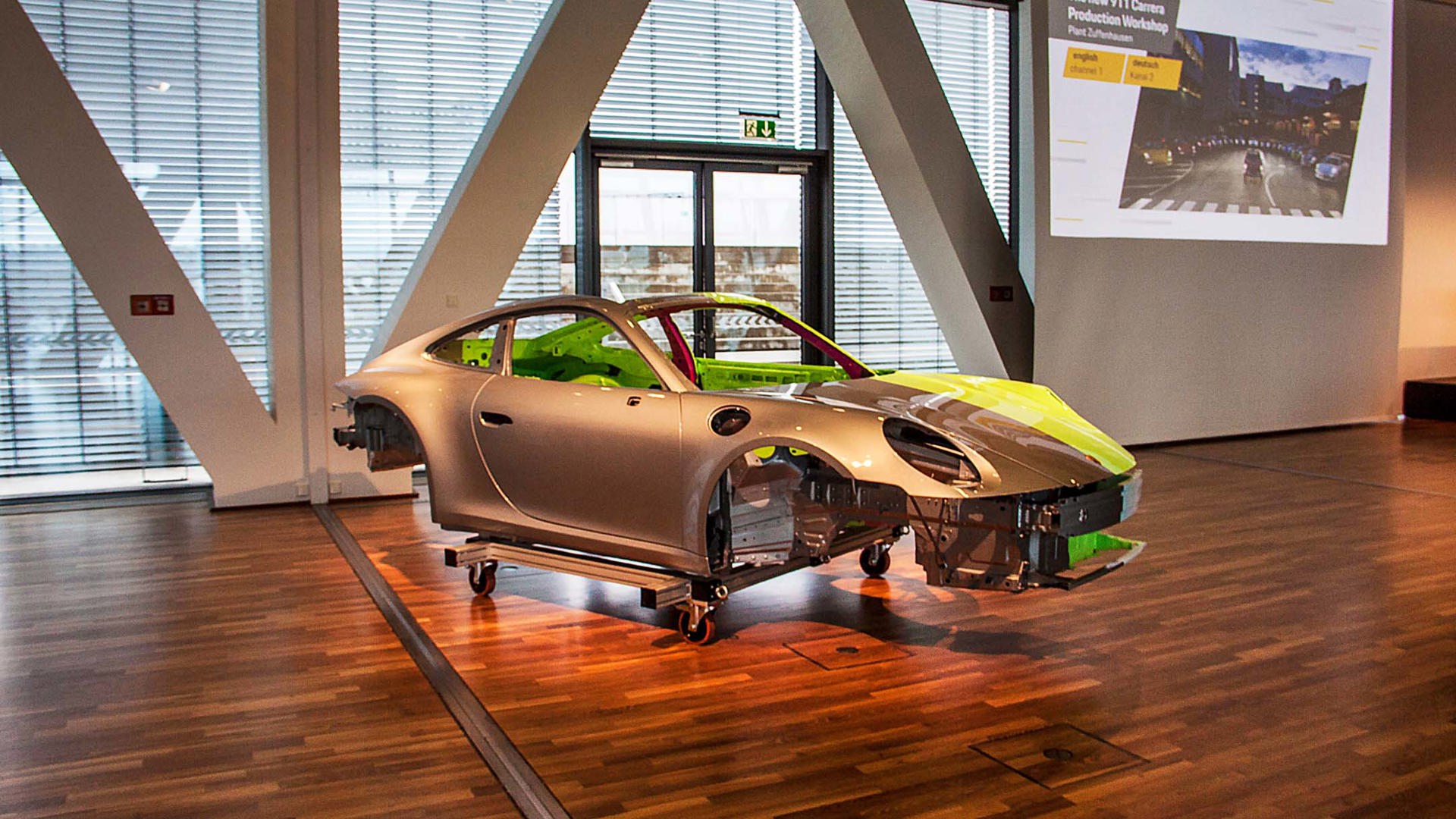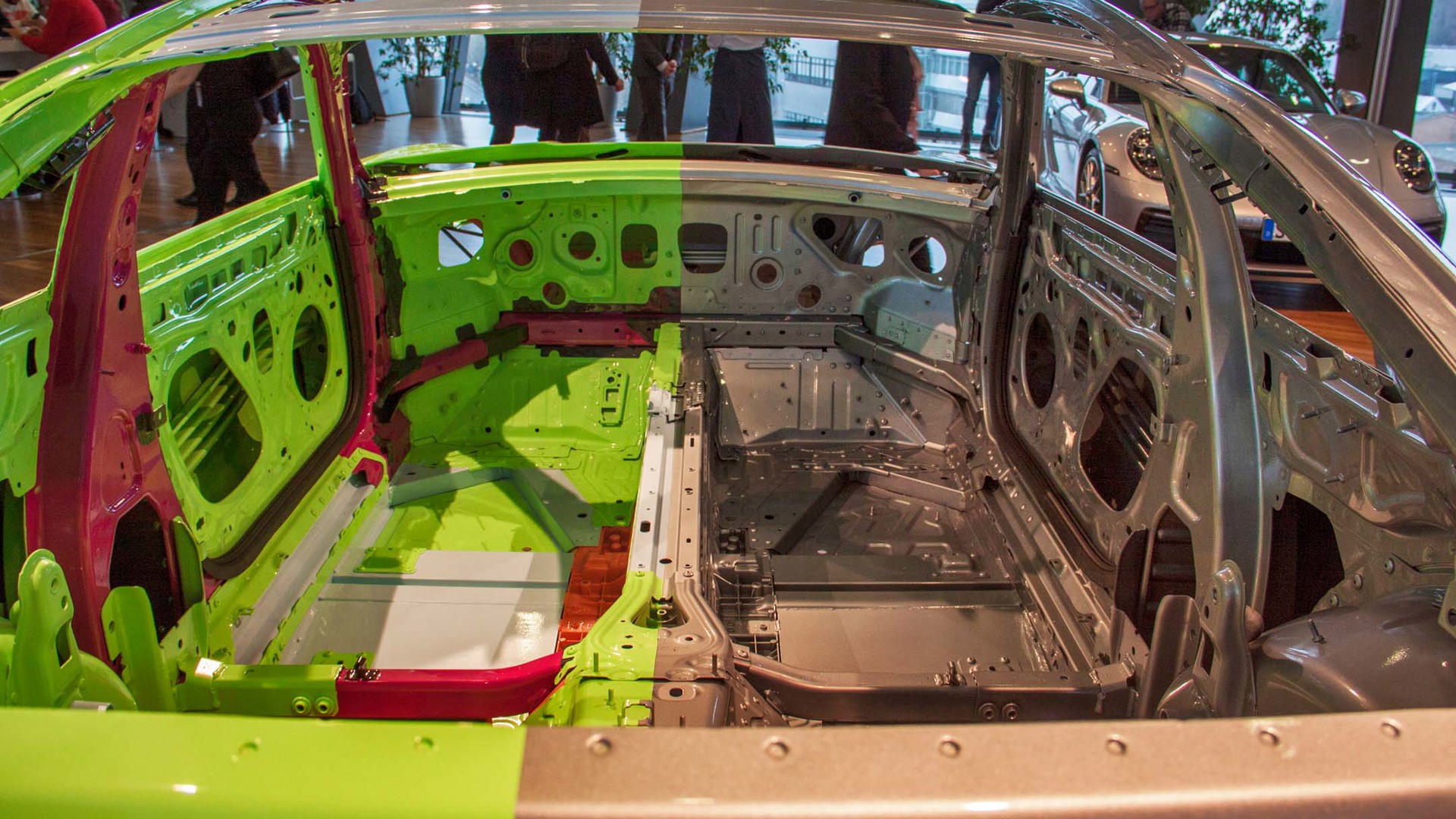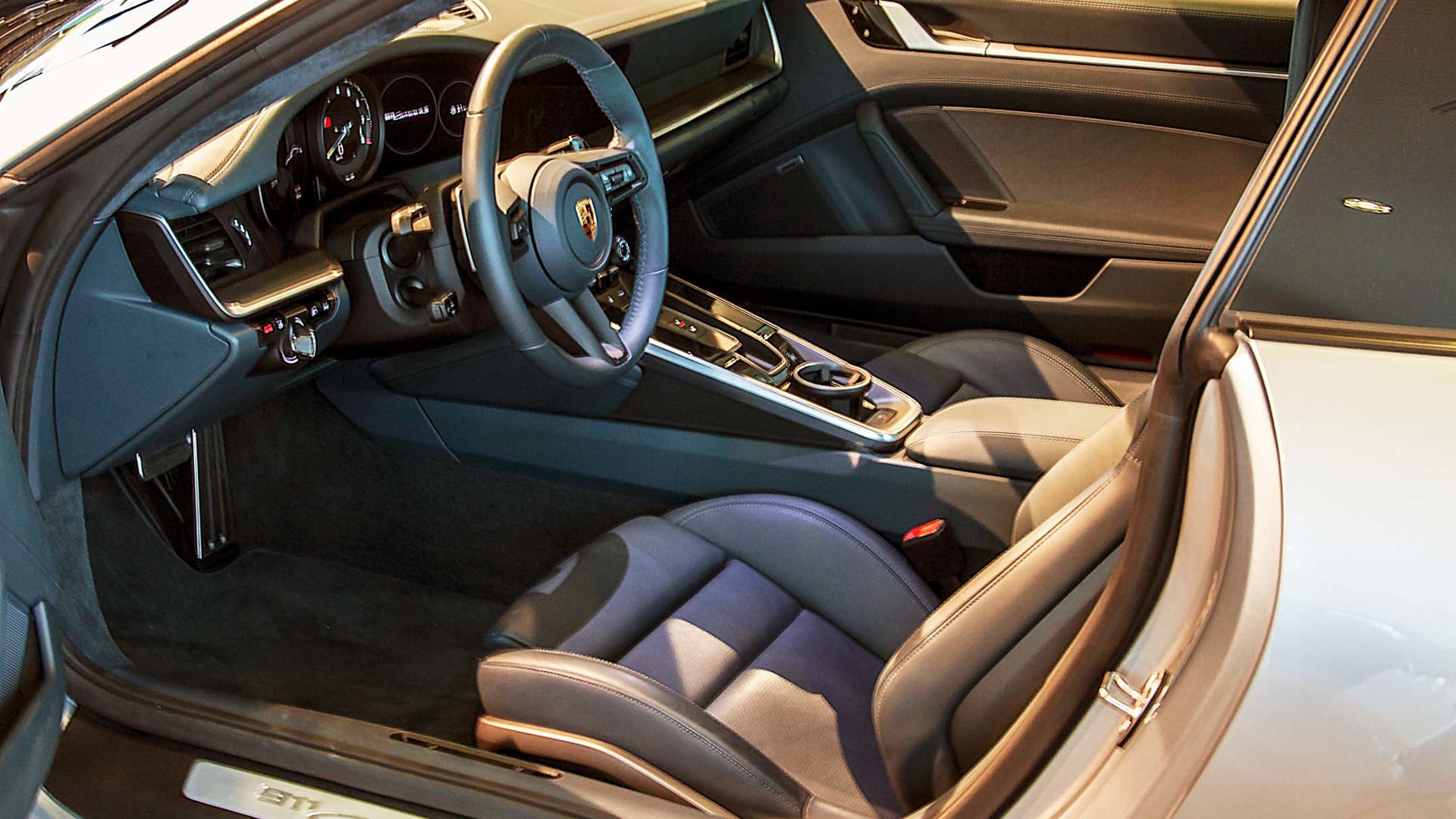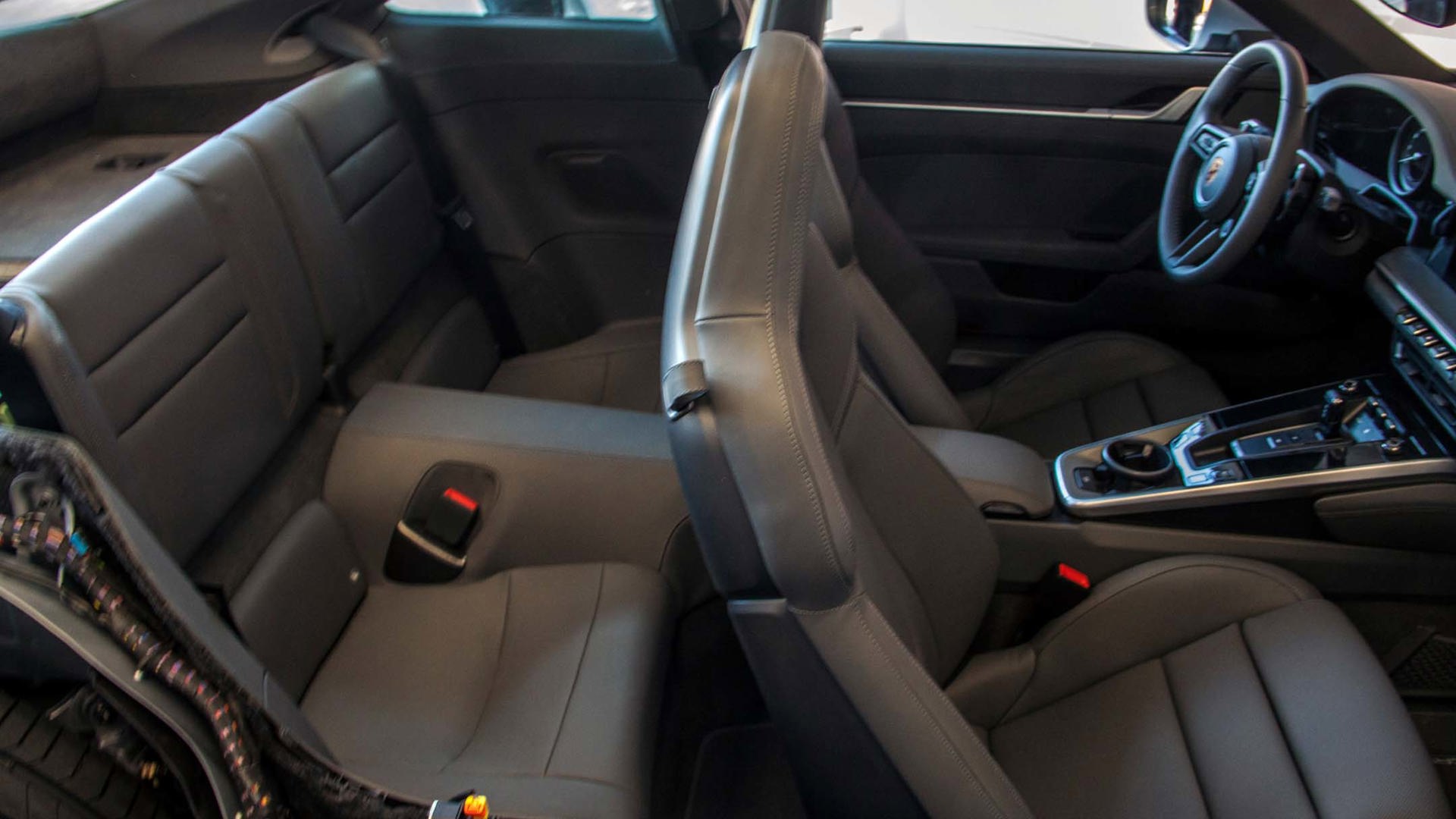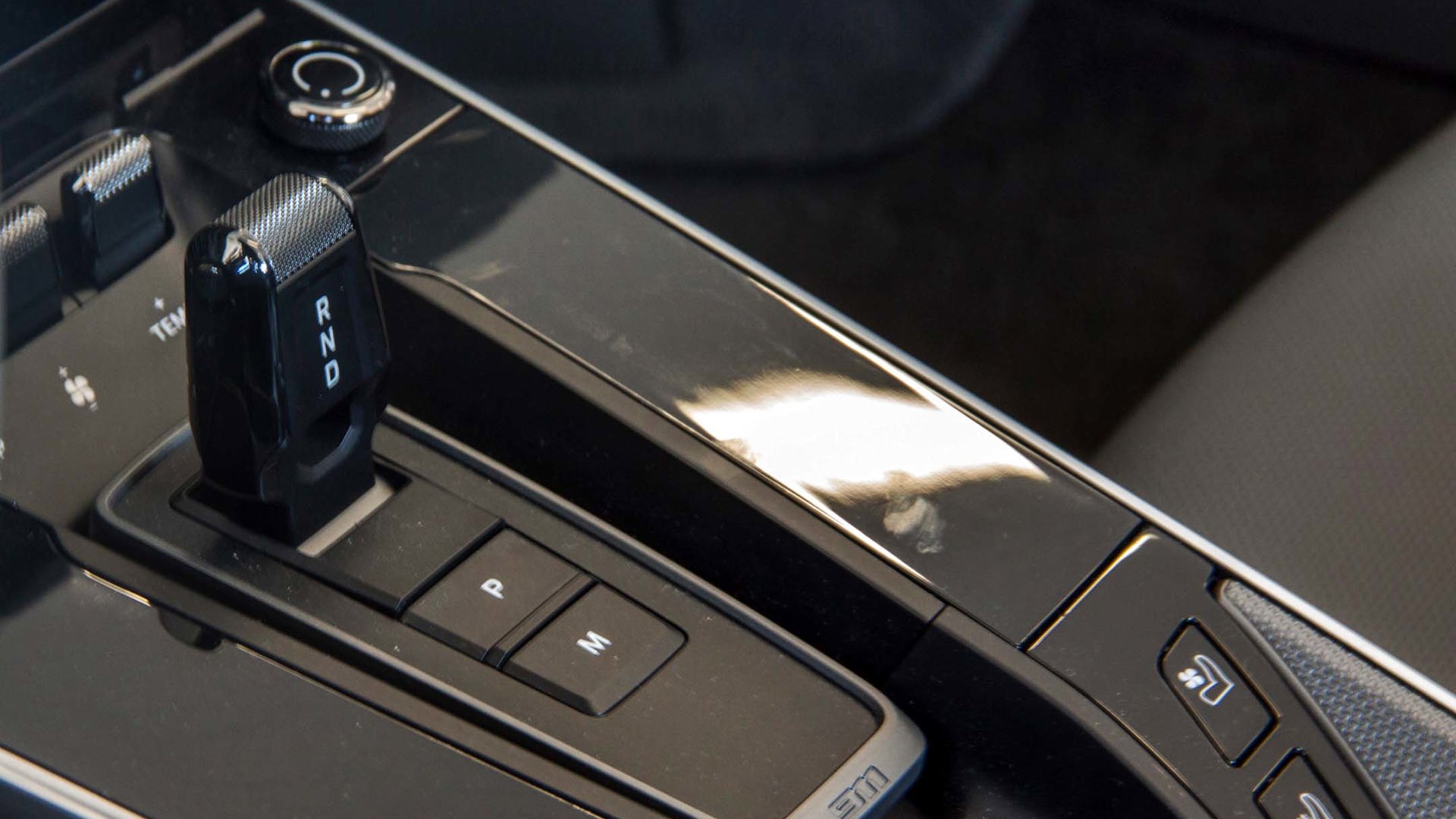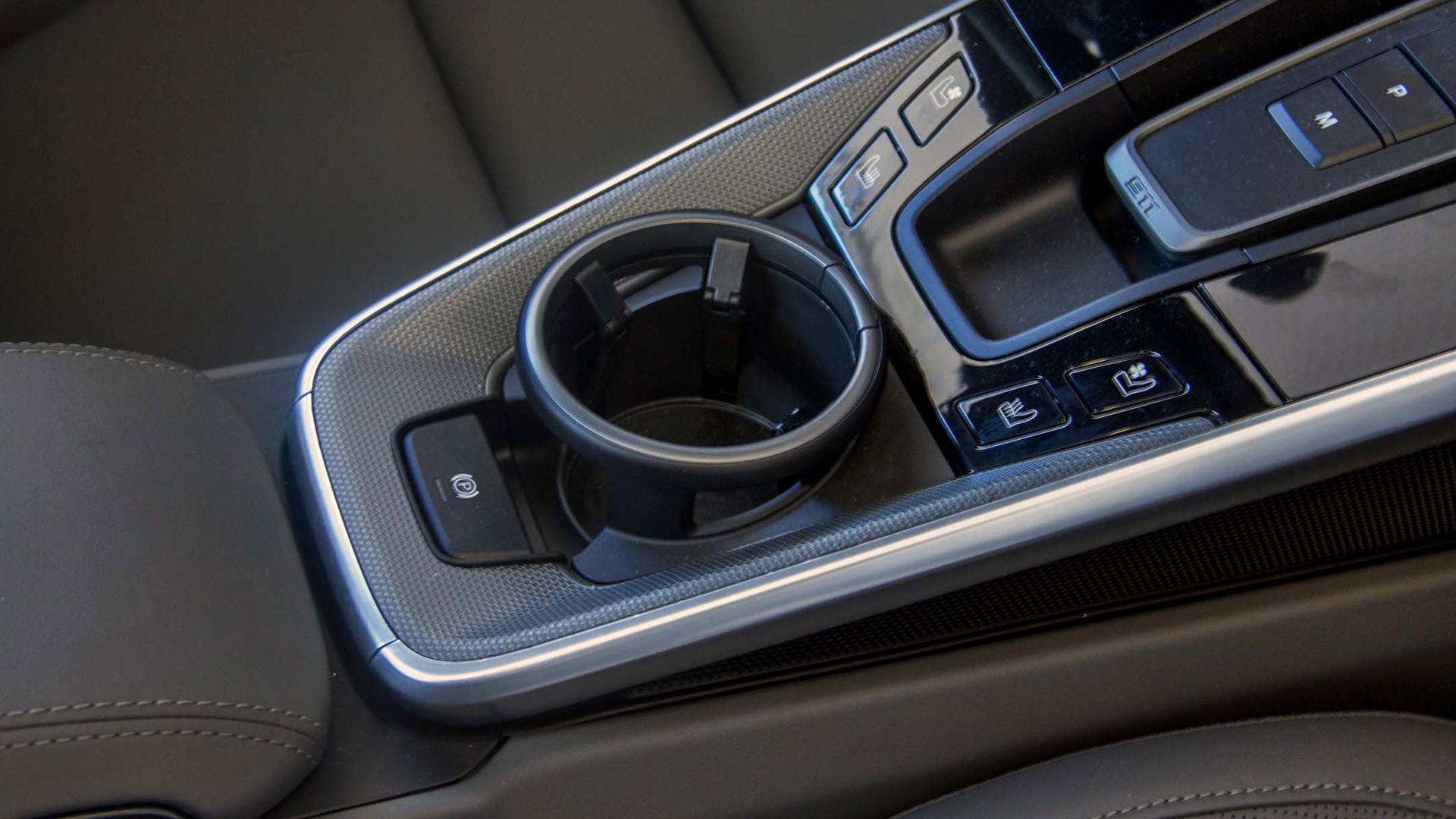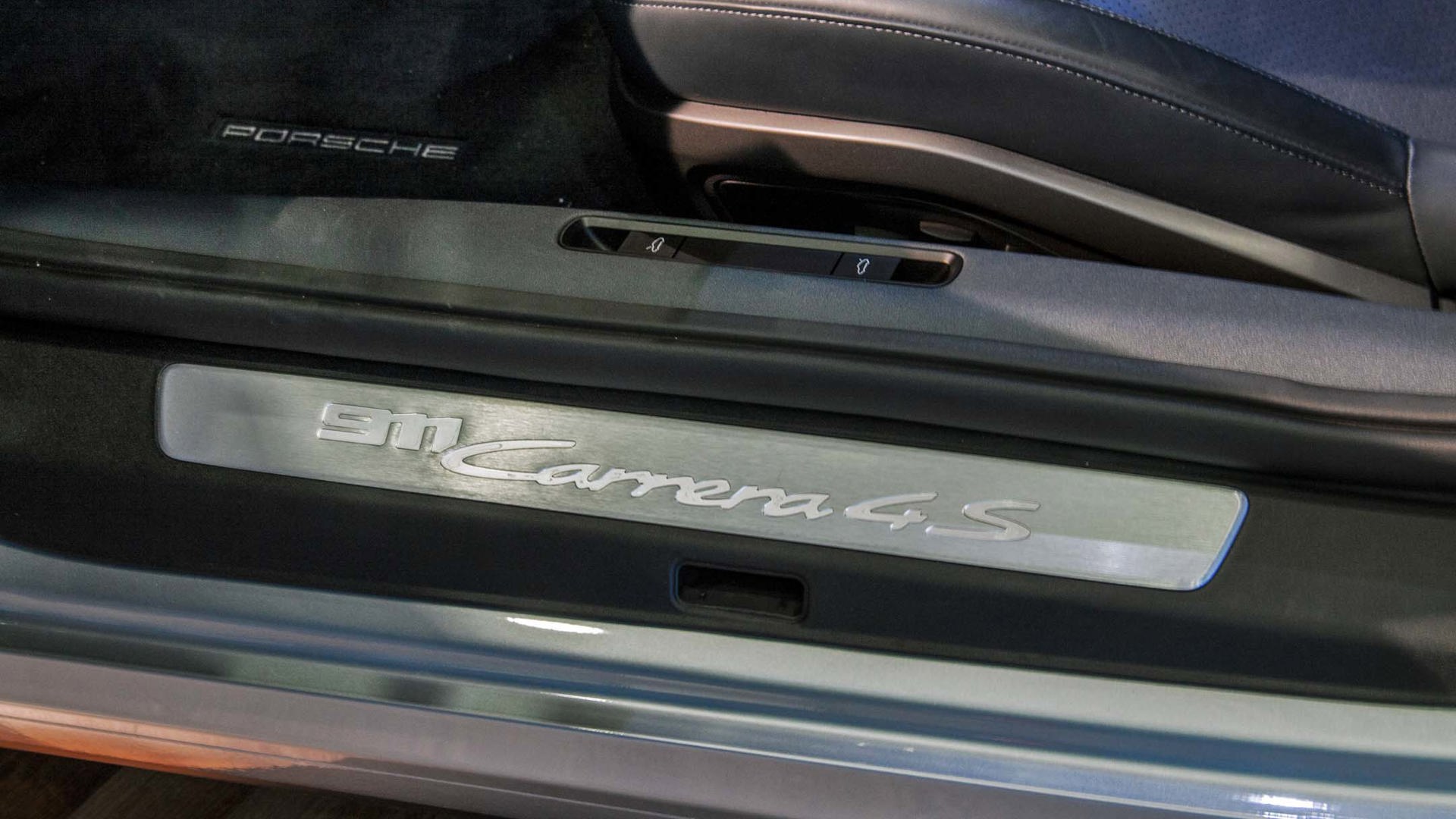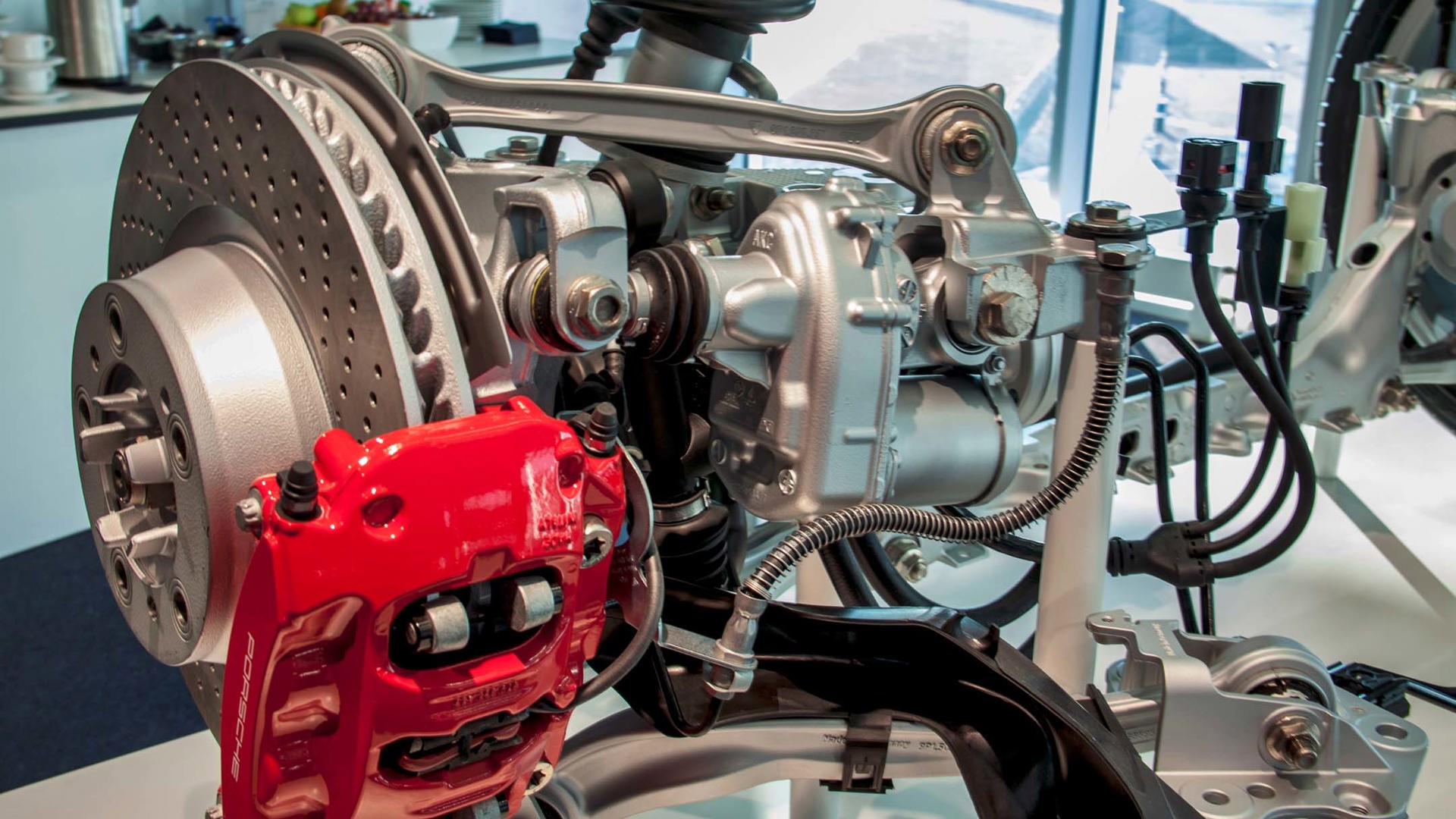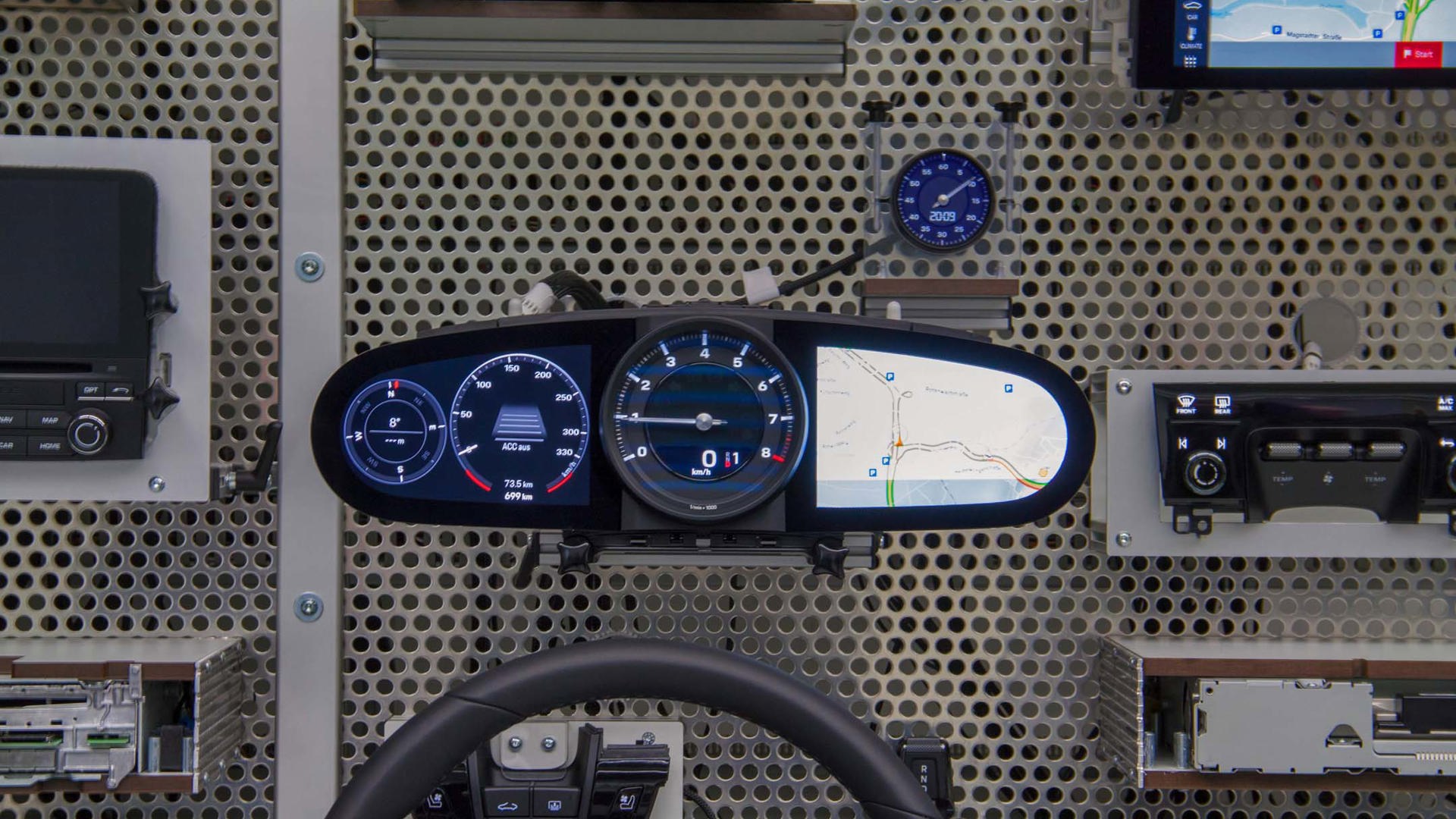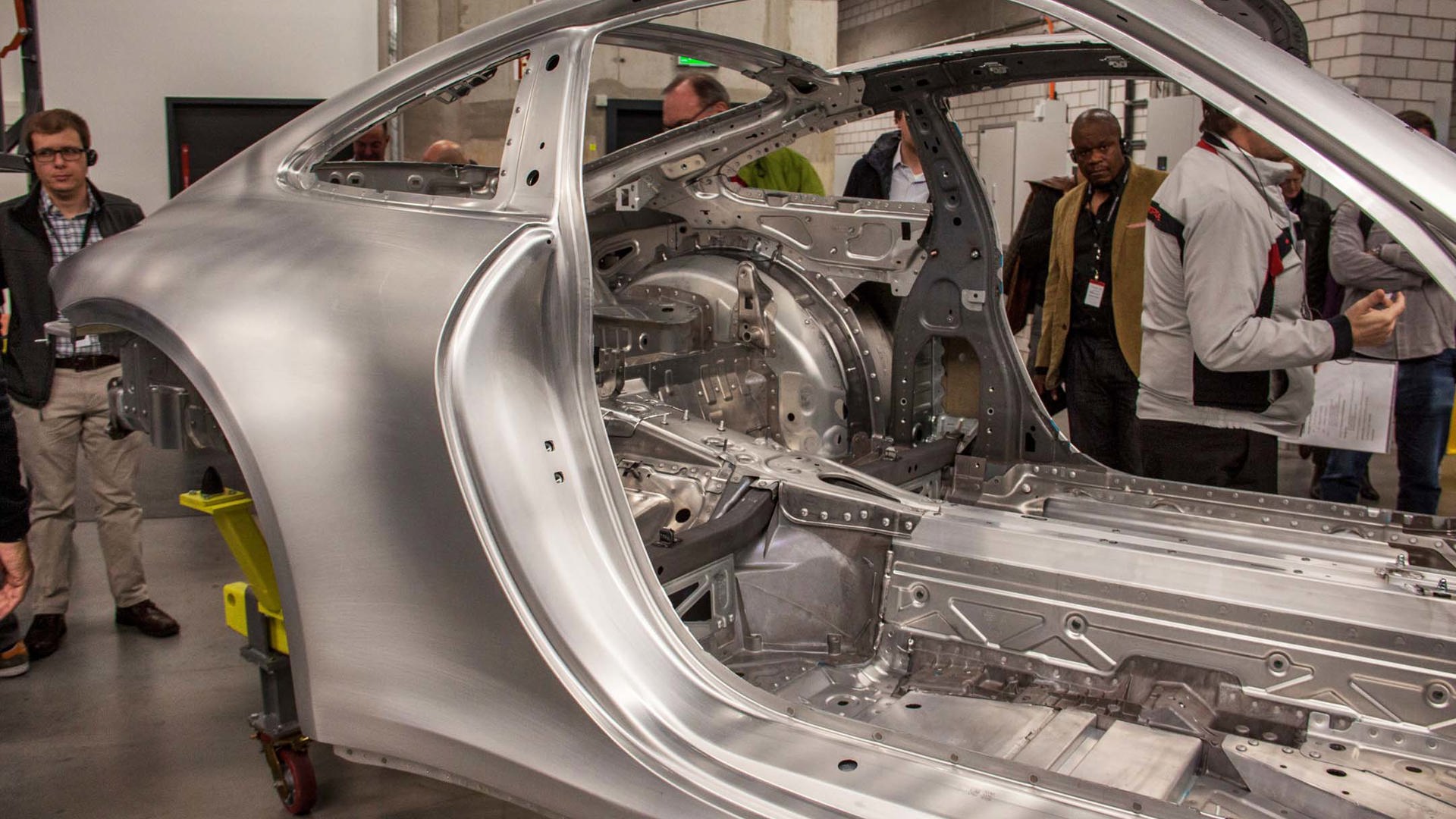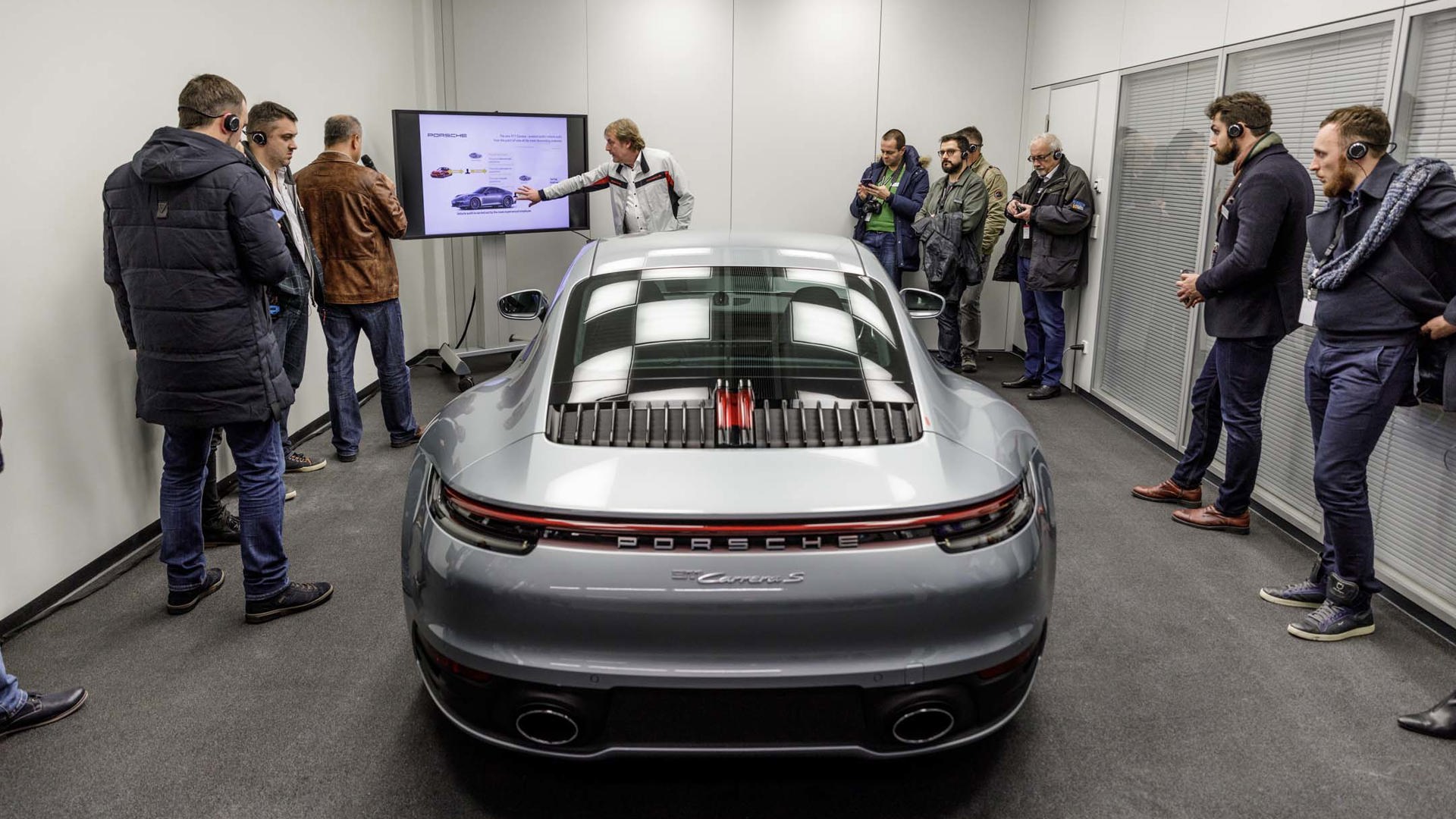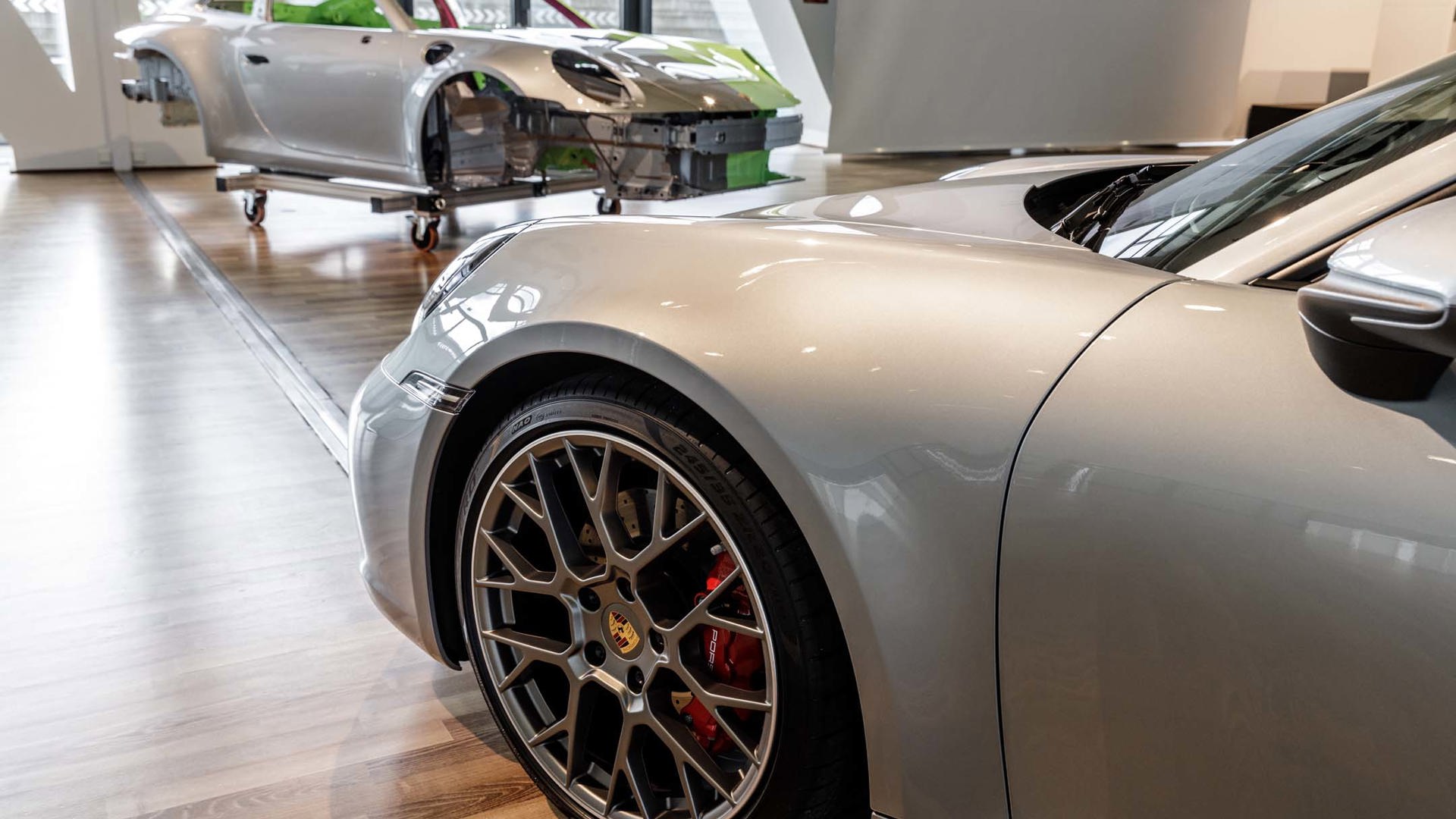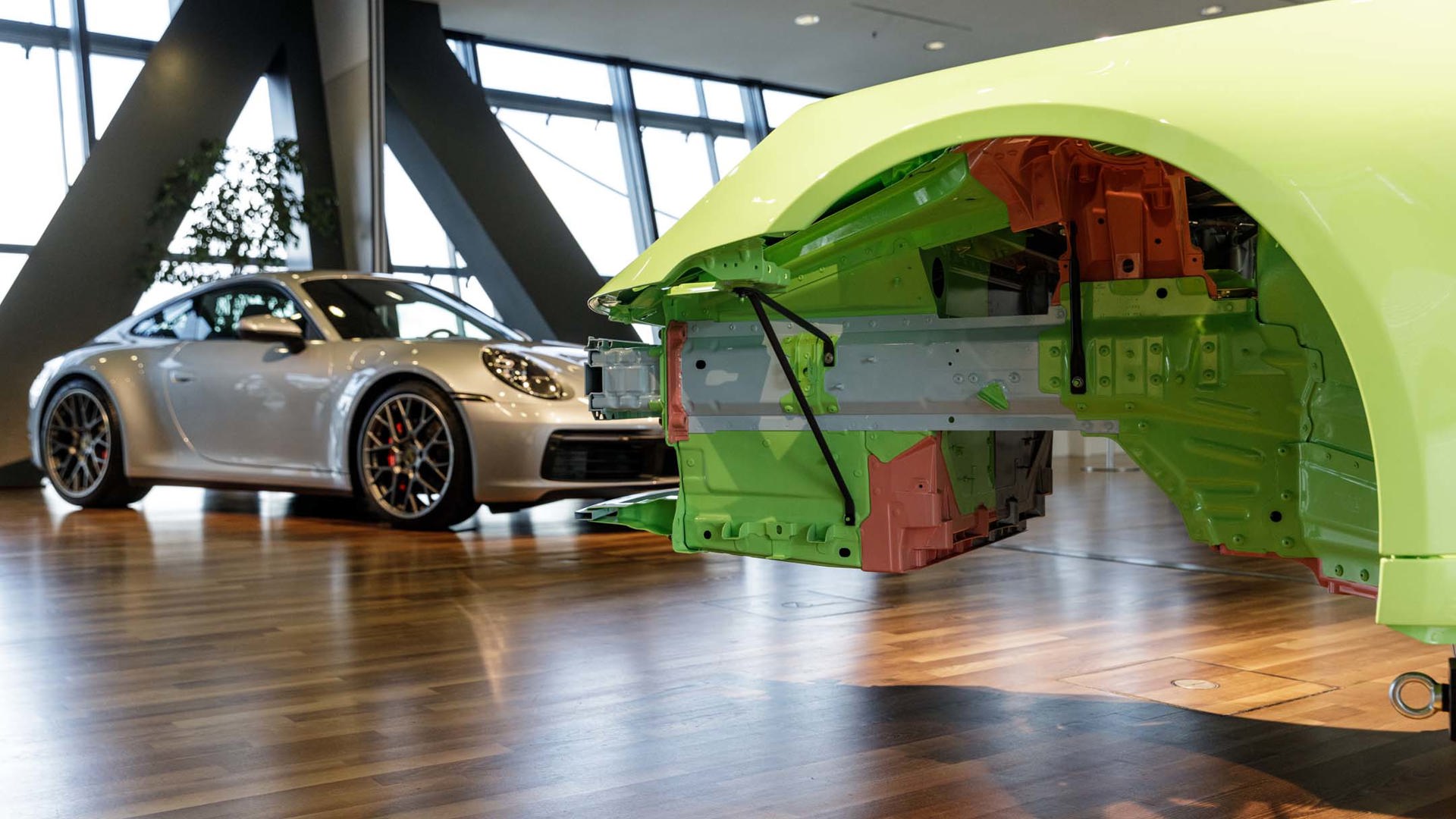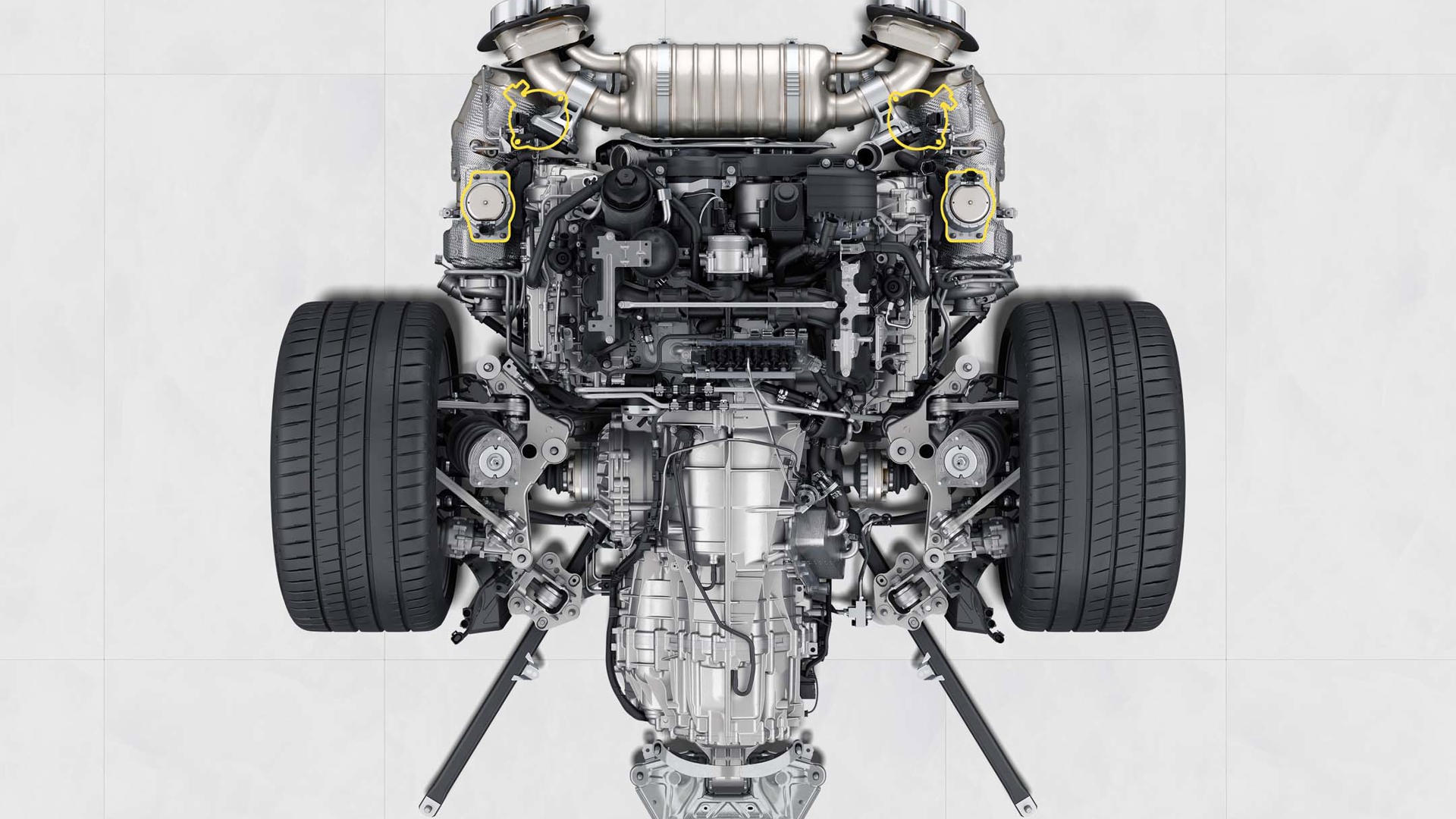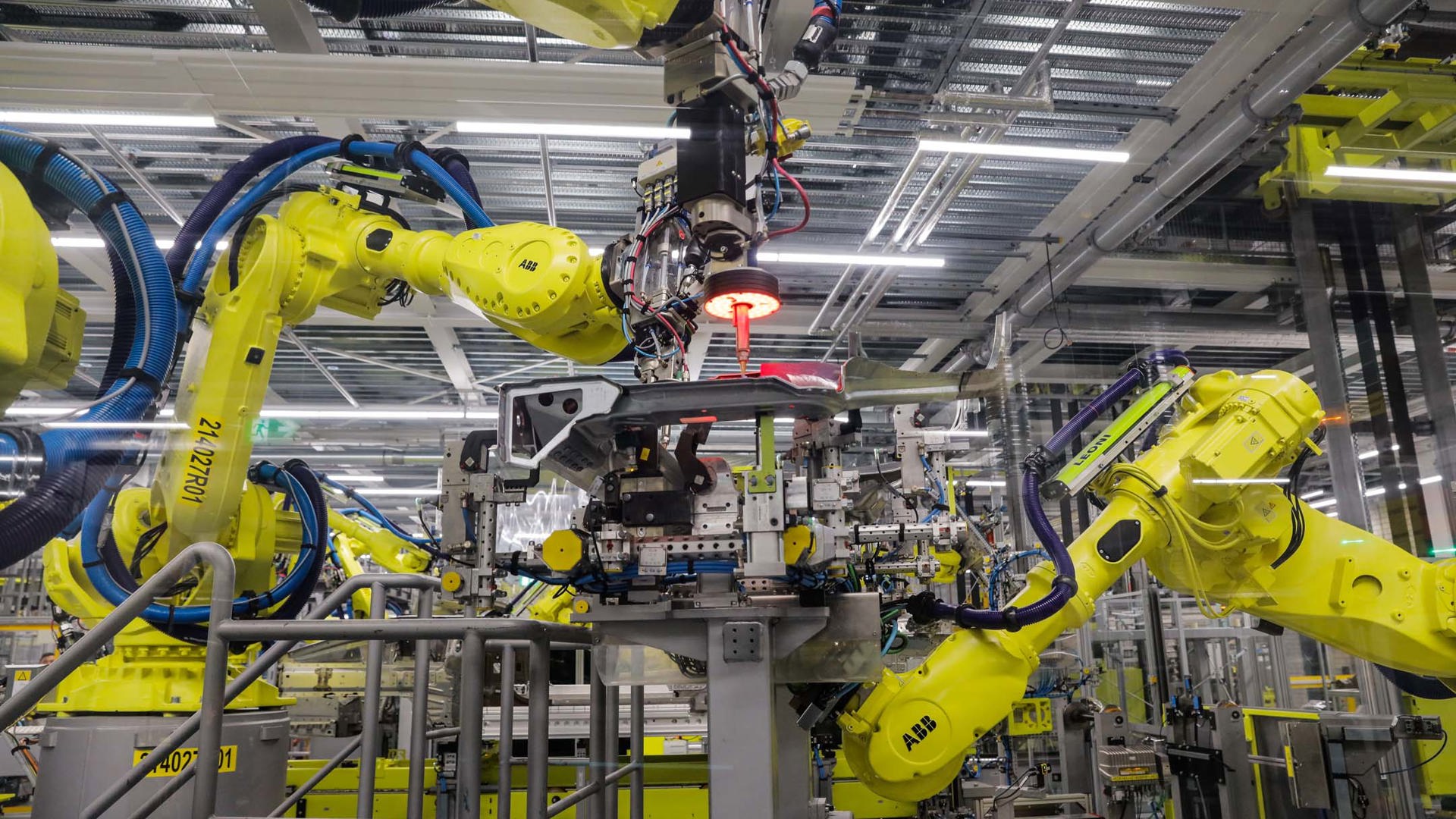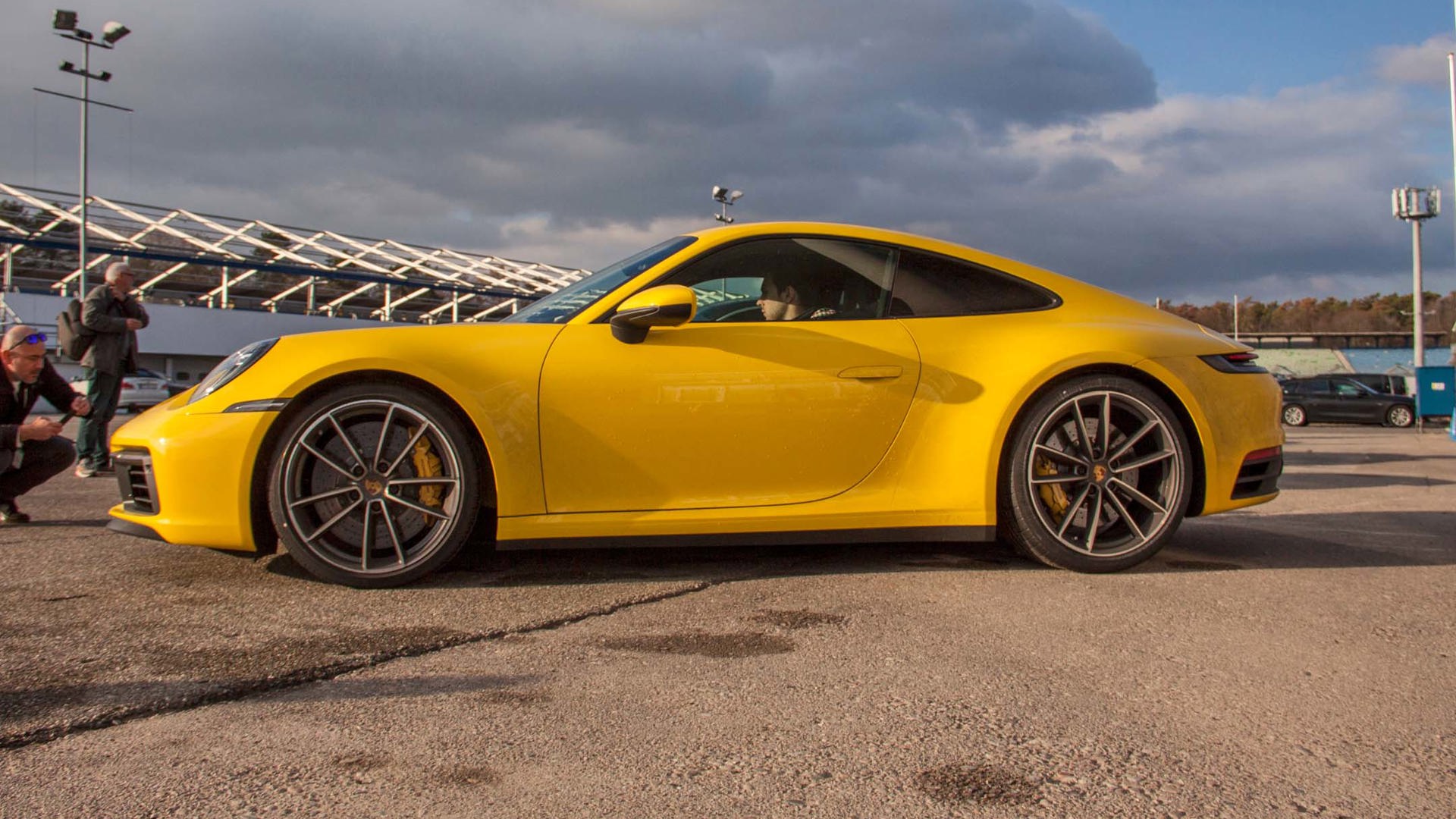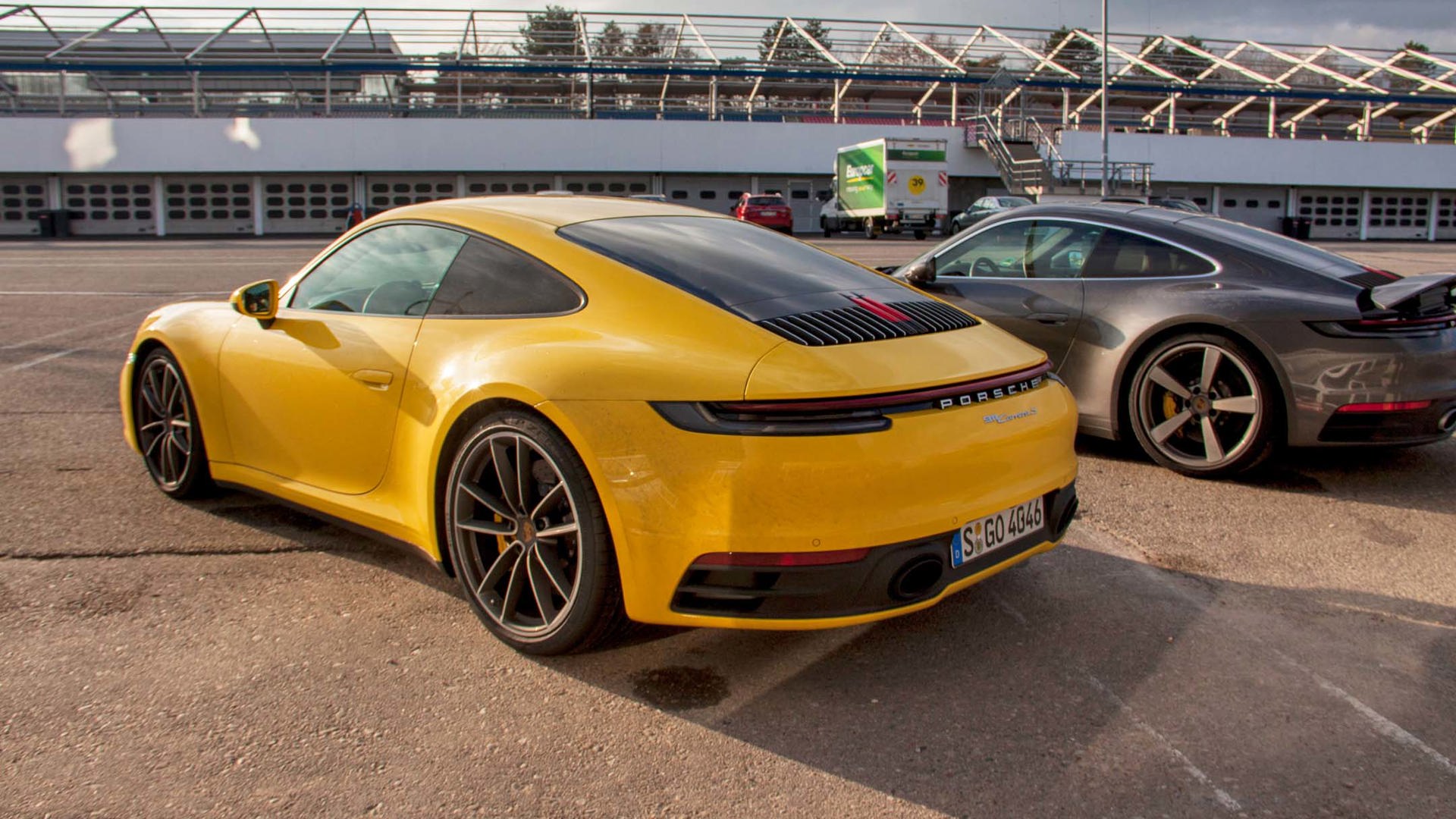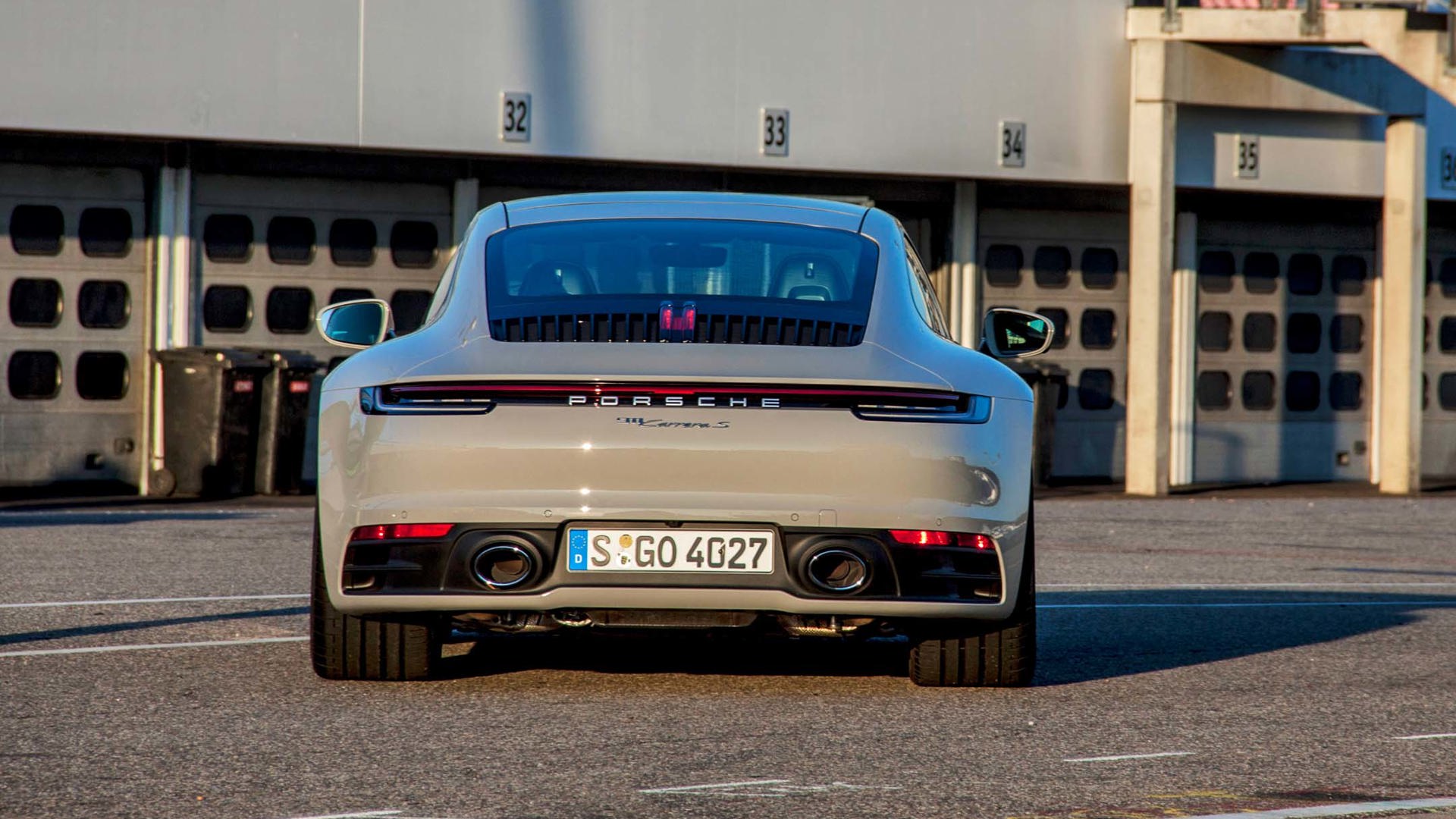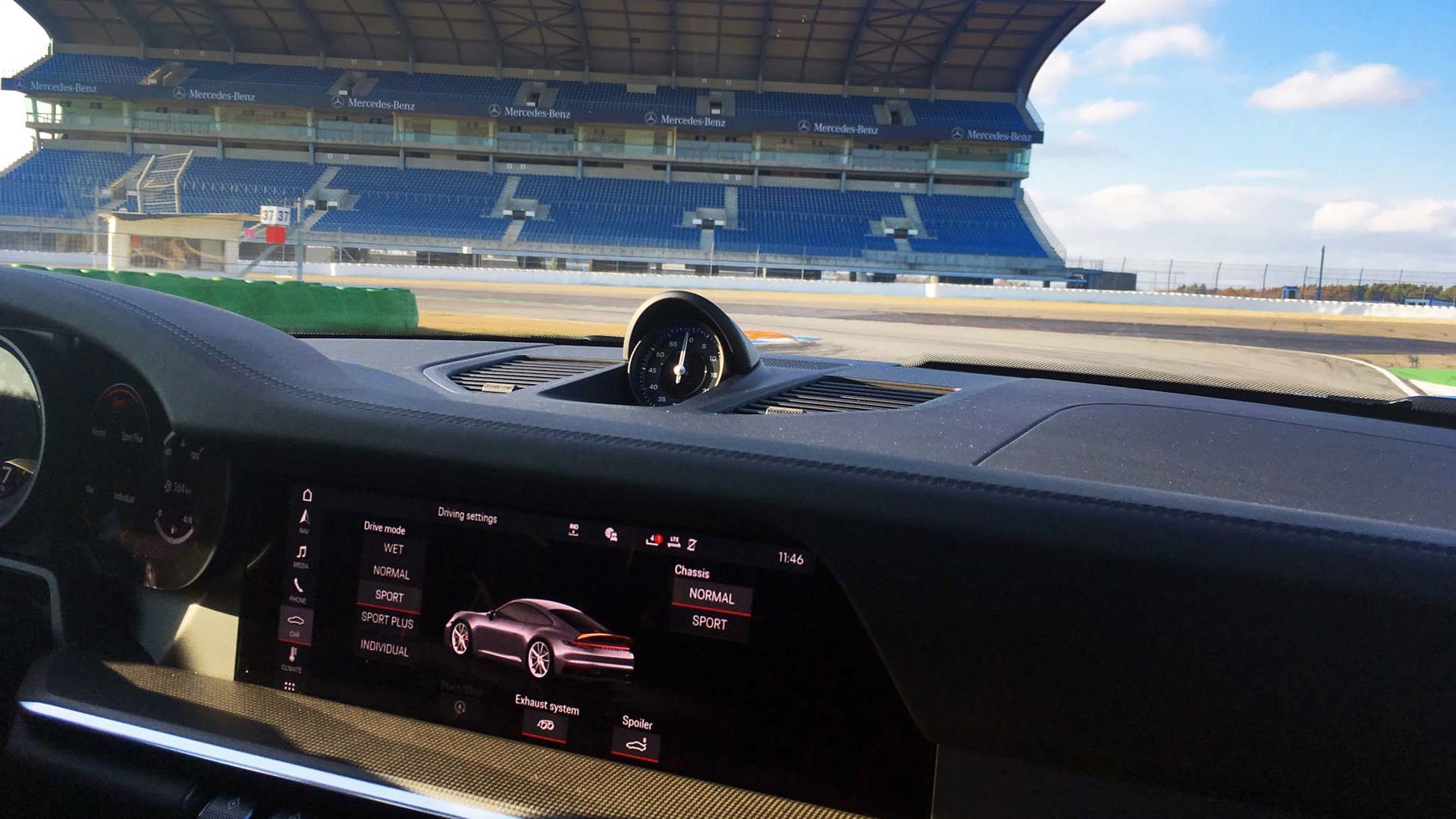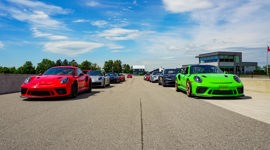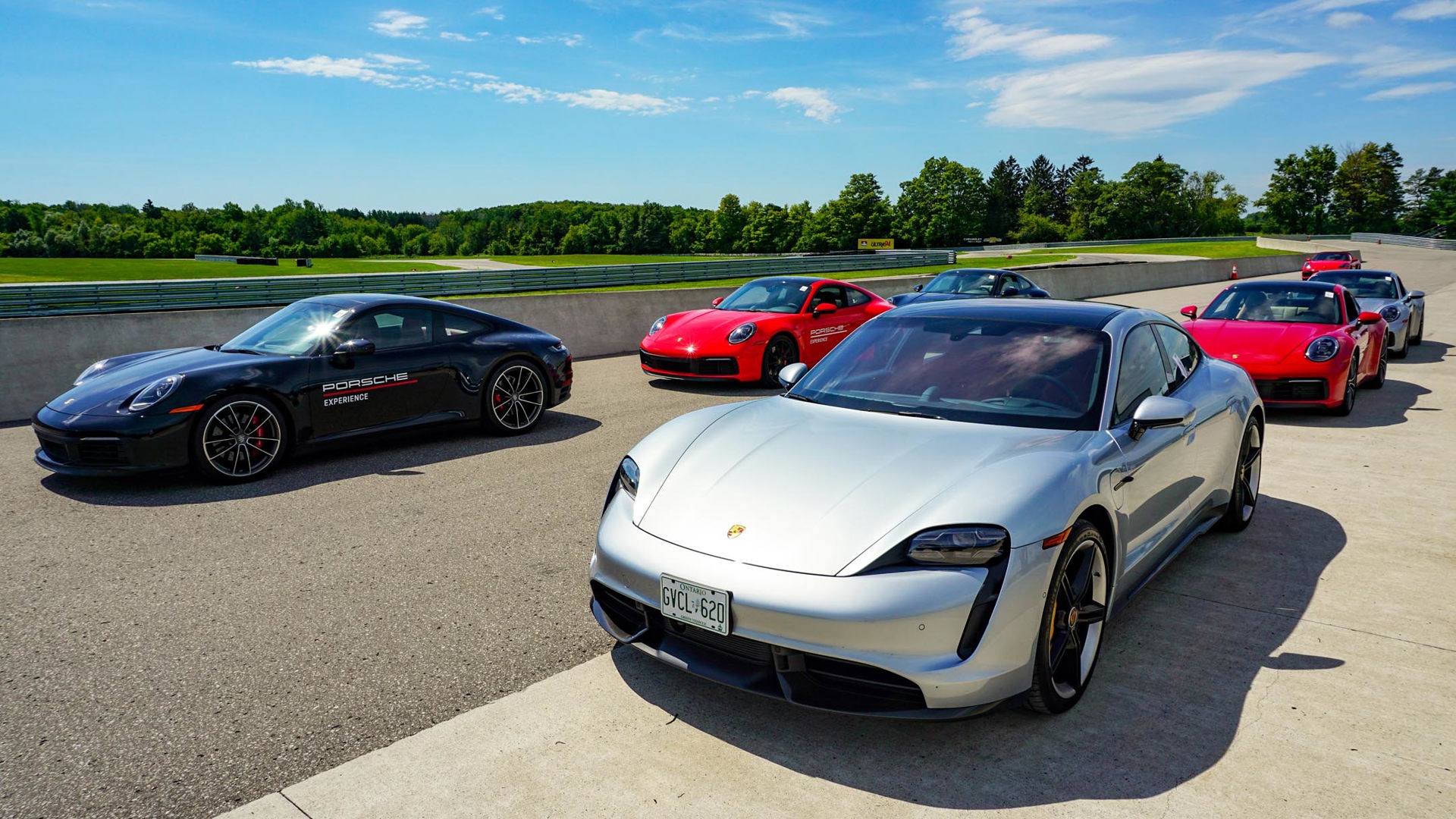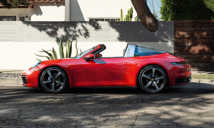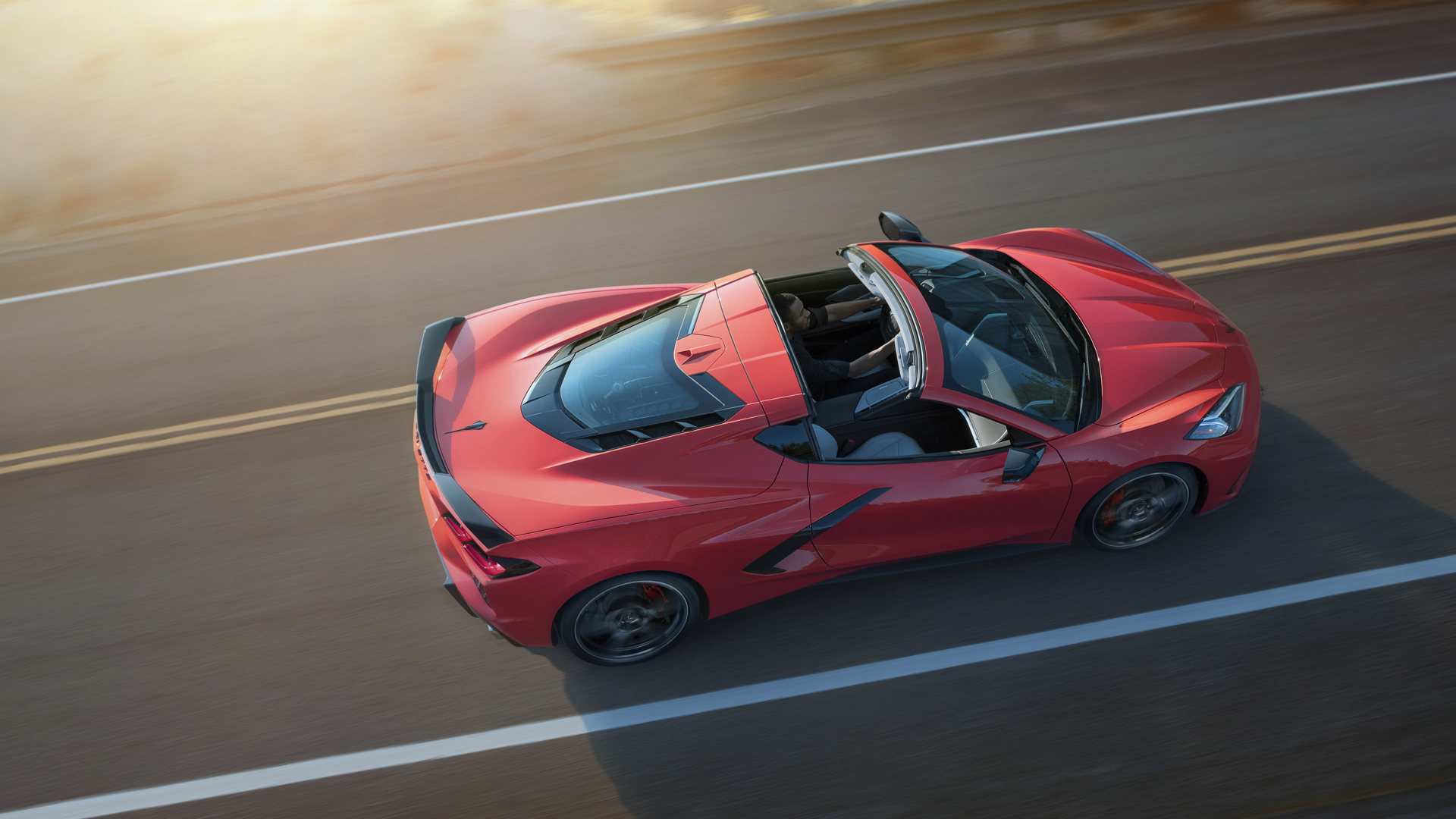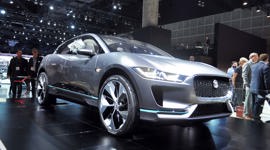ZUFFENHAUSEN, Germany – In the annals of automotive history, few cars will leave as big a mark as Porsche’s most famous sports car. Launched in 1963, the 911 was a milestone for the small German car company, going on to become one of the most aspirational vehicles ever made, and a global phenomenon in every form of motorsport.
Naturally, Porsche is passionate about conserving this legacy, and developing a new model is undertaken with great care. After much anticipation, Porsche swept away the cloth at the recent Los Angeles Auto Show to reveal a 911 that didn’t deviate from the original’s design ethos, while being radically different from any that had come before.
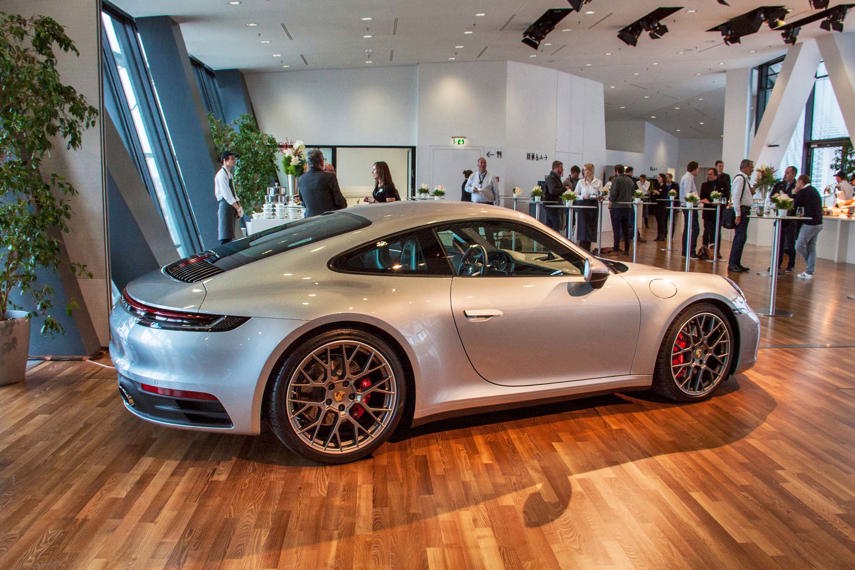
Celebrating its 70th anniversary this year, Porsche began in a small brick factory in the town of Zuffenhausen near Stuttgart. There are now five plants in Zuffenhausen now, and with no more room to expand, they were forced to grow upward. An ingenious system of conveyors runs between the multi-storey facilities, so that the 911s, Caymans and Boxsters – and the hundreds of components that go into building them – don’t use public roads in any stage of production. While it probably would have been easier to abandon the landlocked facilities and re-locate, “Zuffenhausen is the heart of Porsche” – according Christian Friedl, plant Vice President. And that original brick building is still at the centre of the operation. “We didn’t want Zuffenhausen to be a museum.”

We briefly toured the four-storey body shop that had recently undergone a 700 million euro renovation to prepare it for the 911 and future Taycan. We’d been told earlier that Porsche employs over 5,000 people, yet it’s eerily devoid of human life here. Much of the heavy body work – crimping, roller-hemming, riveting, and gluing – is performed by huge robots behind walls of glass. Yet occasionally, we catch sight of a technician moving among the giant robots like a Lilliputian among the Brobdingnagians. Apparently this is the world’s first automotive plant where humans and robots work together in symbiotic harmony. The robot’s sensitive outer skin detects when a human technician is near and slows down, and comes to a full stop if touched. Yet it’s humans that perform with white-gloved accuracy the sacred placement of the hood badge.

Here we see the body shell come together with the new MMB (Modular Mid-engine Platform) that is making its debut with the 911, but will eventually underpin the Boxster and Cayman too.
The eighth-generation 911, or 992, uses half the steel and twice the aluminum of the 991 that preceded it. While high-strength steel is still used in the safety cell; the front and rear longitudinal members, door sills, and floor pan are extruded aluminum. Cast aluminum is used for the strut tower mounts and rear tunnel mounts, and the outer skin is now fully aluminum.

The 992 has the same 2,450 mm wheelbase as the previous car yet, despite all that aluminum light-weighting, is 55 kg. heavier. Even the brake pedal – made from carbon-fibre composite – is 40 percent lighter. Porsche needed to shave as much weight as they could to offset the extra pounds added in electronic and mechanical complexity. Light-years ahead of its predecessor in engineering sophistication, the new car debuts several new technologies for the 911, and one that’s even a world first.
Visually, the 992 is the next step in that unbroken line that runs all the way back to 1963. The silhouette is unmistakeable. But it’s very definitely a modern interpretation of the classic theme. Its haunches and front track are 40 mm wider, and length increases by 30 mm. The LED taillights are now connected by a continuous light bar, and the front air ducts and now incorporated into the wider grille. Available are new intelligent LED matrix headlights that selectively dim for illuminated signs and oncoming traffic, and include dynamic cornering lights. The car rides on Porsche’s first set of staggered wheel sizes; 21 inches in behind and 20 inches up front.
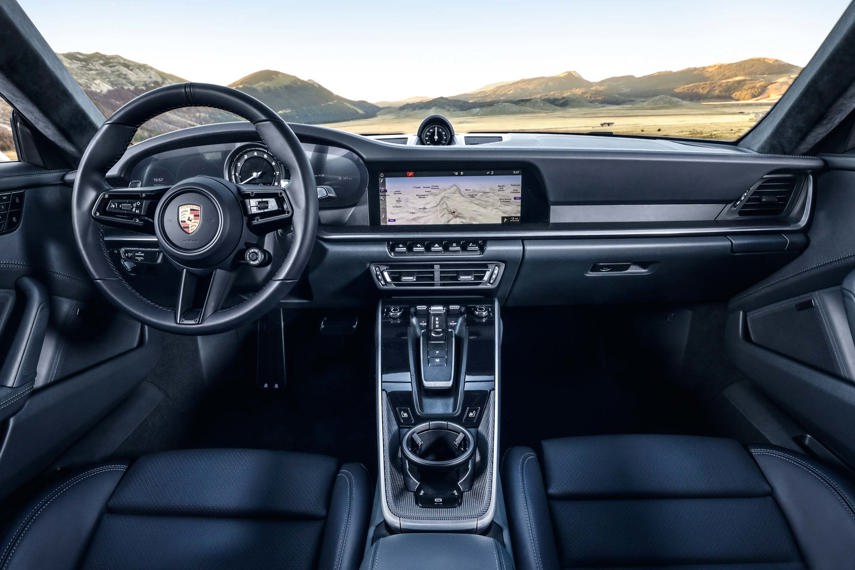
The dash is wide and sleek, and the centre console features a slick new 10.9-inch display that has one of the crispest we’ve ever seen. Flanking the analogue tachometer are two 7-inch colour displays that can be modified to prioritize the driver’s choice of information. The PCM (Porsche Communication Management) interface is far more sophisticated, with better integration, yet simpler to use. It’s now possible to pinch and swipe, smartphone-style, and the display can recognize voice and handwriting. Online connect services are integrated with navigation, media services, or music streaming, and work with voice recognition. For example, saying “I’m hungry” will bring up a list of restaurants, complete with prices, user ratings and available parking. Navigation also uses “swarm data” from similarly equipped vehicles to provide advance warnings of accidents, fog, and slippery roads.

Safety systems too have taken a quantum leap forward with standard stop-and-go adaptive cruise control that works up to 210 km/hr, lane-keeping assist up to 250 km/hr, infrared thermal night vision that can detect pedestrians and large animals, new surround view, and park assist. A world-first new technology is now standard on all 911s: Wet Mode. Acoustic sensors located in the front wheel arches listen for spray, and alert the driver, who can then choose to use the Mode selector button. It puts the traction and stability control on high alert, softens the dampers to improve traction, and raises the aero wing for extra downforce. In the all-wheel-drive 4 S, it sends more power to the front wheels.
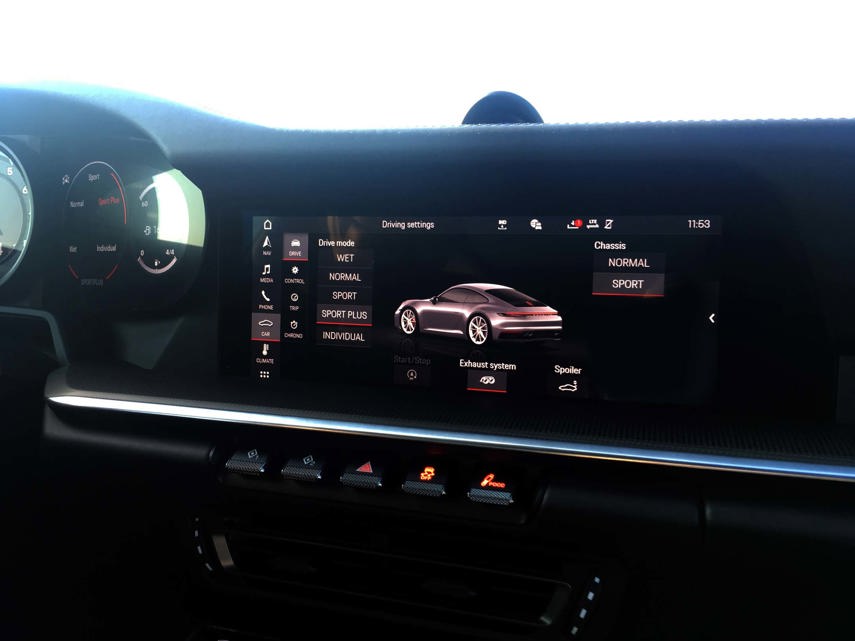
The 3.0L turbocharged flat-six returns with significant upgrades. More powerful, with 450 hp and 391 lb-ft of torque, it’s also more efficient, with a 8.9 L/100 km fuel consumption rating. Notable changes include an almost completely new intake system, new larger symmetrical turbochargers, piezo injectors, a lightweight cast manifold, variable intake valve lift, and a higher 10.5:1 compression ratio. With a lap time of 7:25, the new Carrera S was five seconds faster around the Nürburgring than the previous car. The Carrera S and Carrera 4S sprint 0–100/km in 3.7 and 3.6 seconds respectively – a .04 second improvement. The engine mounts move slightly forward – to make room for the new eight-speed PDK transmission you may ask? Not exactly. Although the PDK does gain a new gear set, it’s actually more compressed than the previous seven-speed. That extra space is actually reserved for future electrification. Considering that the new PDK has been designed to handle more than 500 lb-ft of torque, the rumours of a 700 hp hybrid 911 may soon come to fruition.
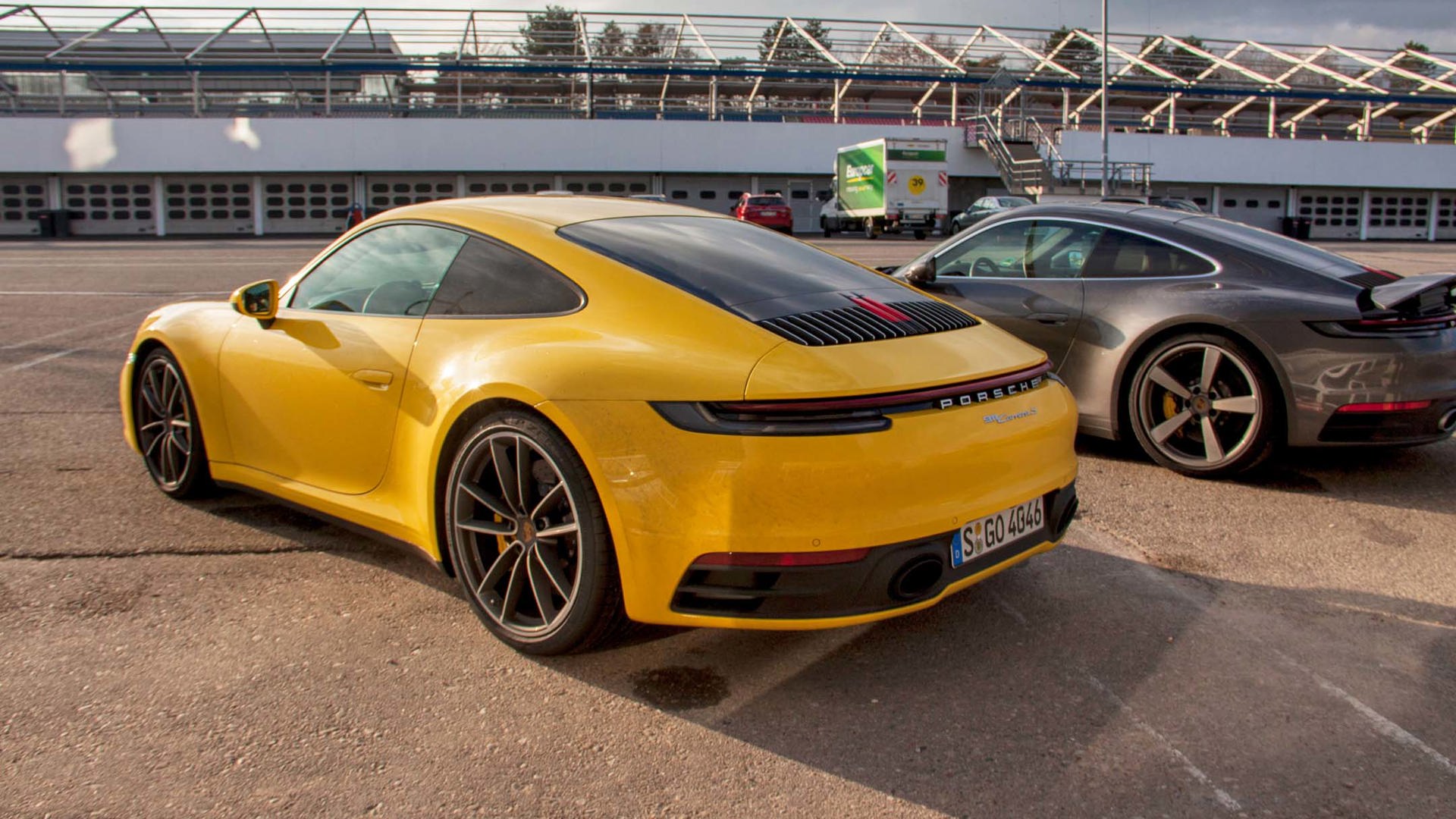
While there will be purists who’ll bemoan the creep of modern technology into their beloved 911, it’s every inch a worthy successor. We rode shotgun over several hot laps of Germany’s famed Hockenheimring track, and it displayed astounding grip and agility. The stiffer body, wider track, and improved aero give it an unshakable stability – that’s the feeling from the right-hand seat anyway. We can’t really tell you more until we drive it ourselves sometime next spring.
The 2020 Porsche 911 will arrive in Canada next fall. Pricing begins at $129,100 for the Carrera S, and $137,400 for the Carrera 4S.
